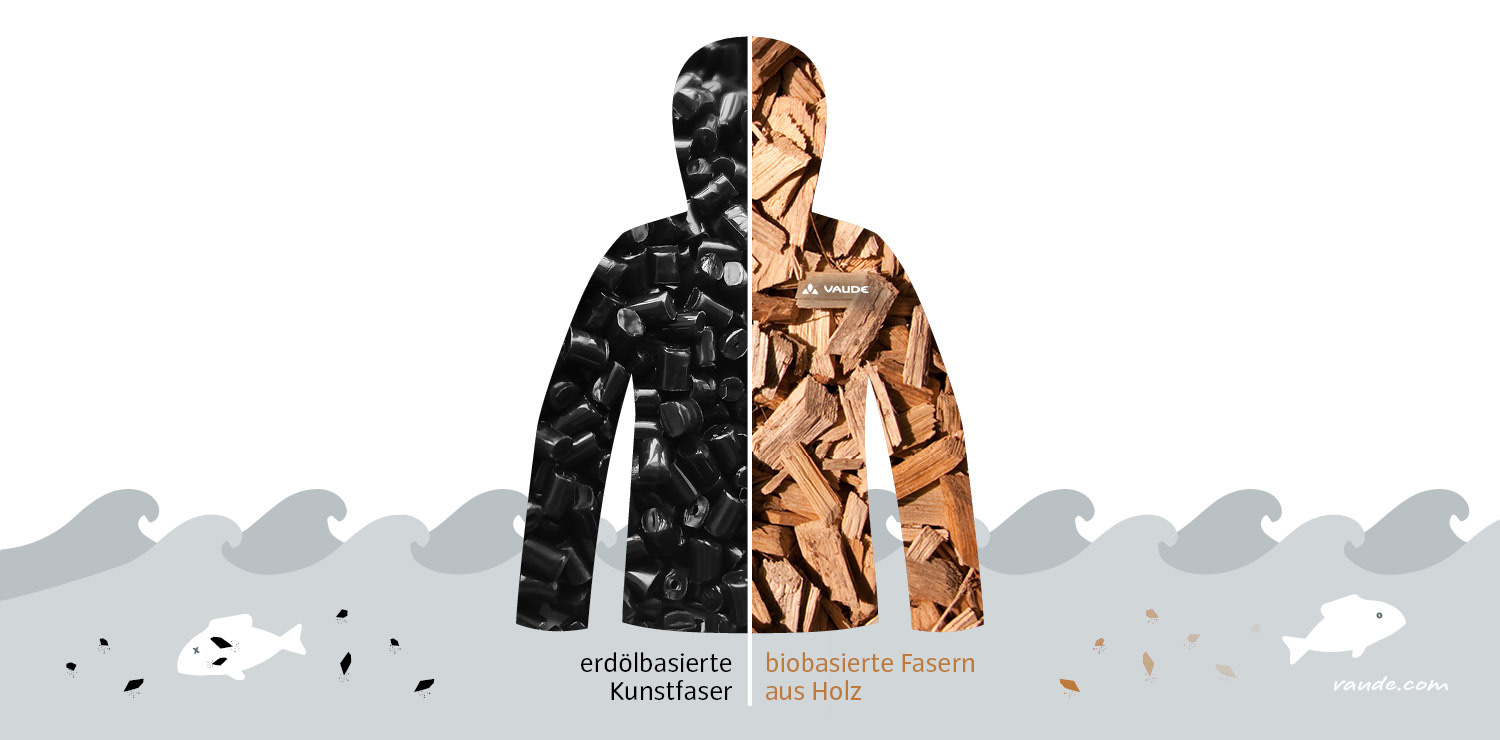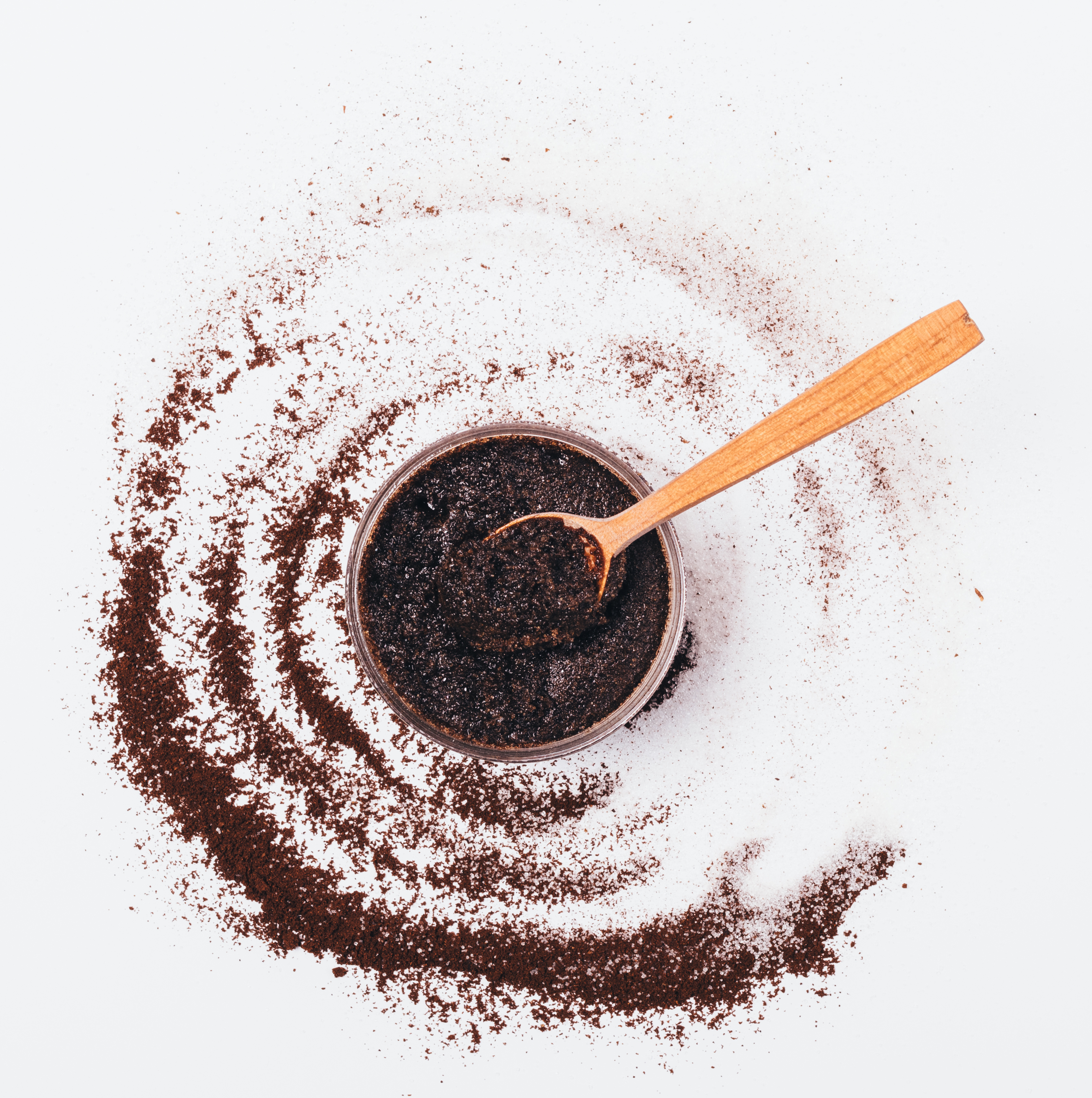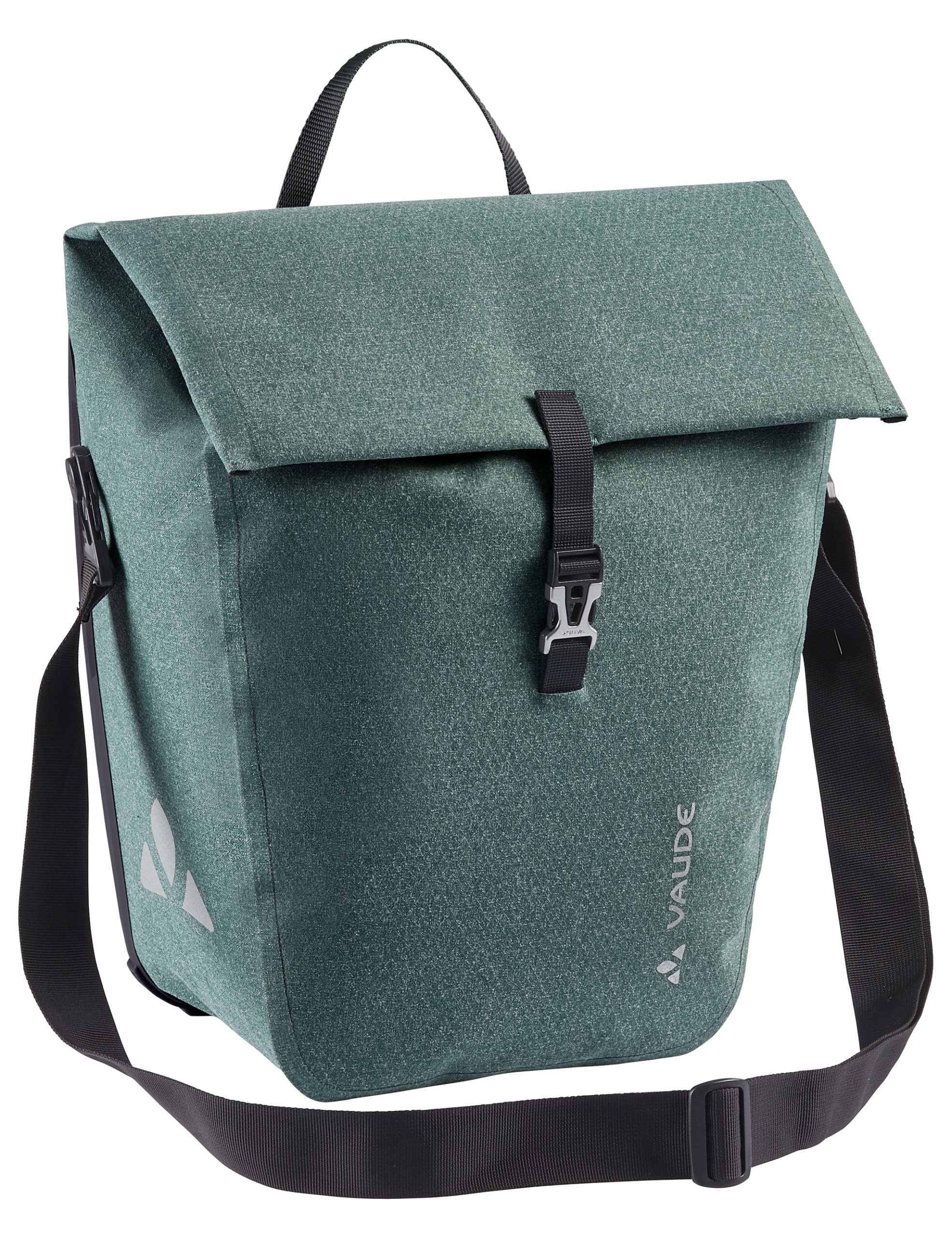Main navigation
Outdoor equipment made from cellulose, castor oil and coffee grounds - functional and durable
VAUDE develops outdoor gear made from natural or recycled materials that are harmless to people and the environment while protecting against the wind and rain. The company relies on renewable raw materials, biobased plastics and the circular economy.
Outdoor activities are booming. And with them the demand for clothing and equipment. Until now, materials used to manufacture jackets, backpacks, tents and the like have mostly been derived from fossil fuels. They leave a climate-damaging footprint and release plastic into the environment. The company VAUDE shows that there is another way.
Superbly equipped with natural fibres
"We have been committed to operating sustainably and producing in an environmentally conscious way for many years," explains the company's innovation manager, René Bethmann. "We don't want to be part of the problem, but part of the solution. That's why we have defined a clear goal: by 2024, we want 90 percent of our products to have a recycled or biobased material content of more than 50 percent."
The first example of VAUDE’s innovation offensive is the use of natural fibres such as organic cotton, hemp and cellulose. "Cellulose fibres made from renewable wood are 100 percent biodegradable," says the graduate engineer. The fact that the Tettnang-based company don’t bushwhack through the forest in the process is demonstrated by the choice of wood: "We use renewable eucalyptus and beech wood that requires neither fertilisation nor artificial irrigation and thus conserves natural resources." This has another advantage: unlike conventional cellulose, the certified fibres1) are not liquefied with chemicals that can enter the environment. Instead, added solvent and water are completely recycled in a closed production cycle.
Avoidance of textile microplastics
"Our big focus is on reducing fibre discharge," explains Bethmann. Tiny particles that come off synthetic textile fibres such as polyester fleece cannot be completely filtered out in wastewater treatment plants and end up in the oceans. As a result, marine life mistakes the particles for food, and microplastics enter the food chain. "With the soft fleece material we are producing from cellulose regenerated fibres, microparticles that come off during washing can completely break down in water."
This is just one aspect of the cooperative TextileMission2) project, which aims to reduce the burden of fibrous microplastics on the environment. The BMBF-funded project has come up with results from three and a half years of intensive research by the partners involved. They found that in addition to using cellulose as a material, certain washing processes, retention in sewage treatment plants and optimised production processes also lead to reduced plastic discharge. VAUDE has also been involved in the latter, as project manager Robert Klauer explains: "Conventional cutting and joining processes increase microplastic emissions. We have therefore tested alternative processes such as cutting with a laser cutter, which reduces particle discharge. The biggest positive contribution, however, has been the development of textile constructions through optimised weaving and knitting processes."
Biobased plastics and recycling
Anyone who thinks coffee is useless once it’s been brewed would be mistaken: "We add spinning mass made from recycled, melted polyester granules to used coffee grounds," says Bethmann, explaining another development. The major benefit: the resulting raw material is quick-drying, has good UV protection and an antibacterial effect. "This means we can do away with chemical odour-eliminating additives in our shirts, jackets, fleeces and cycling shorts pads." The raw material is also used in membranes. The company is clearly moving towards reducing fossil raw materials: up to 25 percent of conventional polyurethane is replaced by coffee grounds recyclate.
The Tettnang-based company uses bioplastics for trekking trousers and components such as zippers and buckles. The material consists of polyamides with over two-thirds renewable content, derived from the oil of the castor plant. "The plant grows on poor soil and does not need additional irrigation. Such poor soils are not suitable for growing food. It is important to us not to compete with food production and to avoid pesticides and genetic engineering," Bethmann says. Compared with conventional petroleum-based polyamides, the fibre saves a lot of CO2 during production. According to calculations by the chemical company and development partner Evonik, the CO2 savings amount to around 50 percent, if carbon storage through the cultivation of the castor bean plant is included. In addition, the plant is perfect for this purpose as it requires hardly any water and the fibres can be dyed at low temperatures.
Biodegradable, logical - or not?
VAUDE wants to shift the emphasis from mass production of harmful textiles to sustainable business models, as Bethmann explains: "We are continuously working to establish new bioplastics in our industry. They also usually have better properties than plastics made from petroleum, such as lower weight, better dryability and impact resistance, and longer durability." Together with international partners, the mountain sports outfitter has developed the world's first biobased polyamide 6 as part of the EU project EFFECTIVE 4).
"We are aware that not every bioplastic is biodegradable. Even completely renewable materials require various influencing factors for this, such as UV radiation, moisture, temperature and oxygen, which vary from region to region. It is therefore important to dispose of or recycle equipment and clothing appropriately at the end of life. We are looking at longevity and reuse of the materials used, in addition to the approaches mentioned above." We're talking about a second life cycle.
Change management: from PET bottles to bike bags
Using existing materials saves valuable resources. For example, VAUDE produces back panels of bike bags using sustainable material from recycled household packaging. Foils, yogurt pots and polypropylene packaging are shredded, separated by type, washed and melted - before the granules are given a new life. "For one back plate, 3 kg of packaging waste is processed, which saves 54 percent CO2 emissions in material production," says Bethmann.
Nylon, for example from fishing nets, is also processed into high-quality clothing. Recycled yarn from PET bottles becomes water-repellent bags and backpacks, and recycled down also finds a new life partner in sleeping bags. "We have added climate protection and recyclability to our requirements for the 2022 summer collection. The Green Shape label requires a product to have more than 50 percent recycled or biobased weight content."5) The label sets the highest standards for environmentally friendly, functional outdoor products across the industry. It is subject to criteria that encompass the entire life cycle of the product - from design and production to care, repair and recycling.
New business models for a stable foundation in the long term
The circular economy and sustainable production are just one aspect being pursued by VAUDE: customers can also rent backpacks, tents and bike bags from the manufacturer online or in stores. Another focus is on durability: the company has its own repair workshop and provides repair instructions and spare parts via the online platform iFixit.
In addition to the change in ecological awareness, VAUDE products come with an economic benefit. This is because sustainable production processes pay off. For example, an innovative water- and dirt-repellent surface treatment eliminates the need for toxic polyfluorinated or perfluorinated chemical compounds (PFCs) and the associated costly process and disposal.
The goal becomes clear: combining ecological and entrepreneurial prudence, with a view to maintaining this over the long term. Managing Director and Chief Marketing Officer Antje von Dewitz has already received several awards for her ecological and social engagement. Earlier this year, she received the ‘CMO of the Year’ award, Germany's most prestigious award for Chief Marketing Officers, as well as the ‘EY Entrepreneur of the Year 2021’ award in the sustainability category.
References:
1) The lyocell fibres used are FCS certified. The "Forest Stewardship Council" (FCS) is an international non-profit organisation that works to promote the environmentally appropriate and socially beneficial management of the world's forests and certifies products from sustainable forestry. https://www.fsc-deutschland.de/
2) TextileMission: https://textilemission.bsi-sport.de/aktuelles/textiles-mikroplastik-reduzieren/
3) https://www.umweltbundesamt.de/bild/einsatz-von-kunststoffrezyklaten-in-deutschland
4) https://www.bbi.europa.eu/projects/effective
5) https://nachhaltigkeitsbericht.vaude.com/gri/produkte/greenshape-konzept.php


